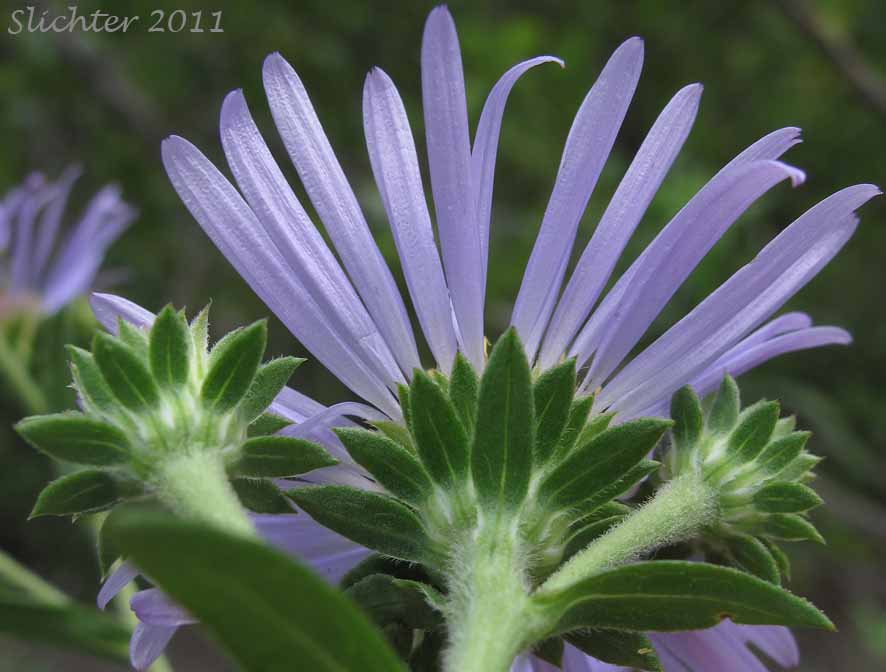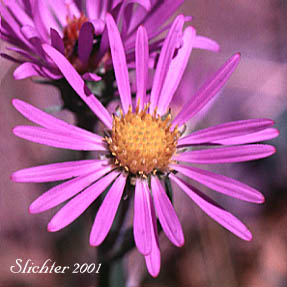
Leafybract aster is a perennial wildflower with one to several upright, ascending or decumbent stems up to 120 cm long. The leaves have entire margins with the lower leaves oblanceolate to obovate in shape with petioles while the upper leaves are sessile and lanceolate to ovate in shape. The bases of all the leaves noticeably clasp the stems. The upper leaves vary from 5-12 cm long and 1-4 cm wide. The lower leaves are often deciduous by flowering time.
The inflorescence of one to several flower heads is a corymb with the involucral bracts ranging from large and leaf-like to small and arranged like shingles. The violet, blue, or rose-purple rays number 15 to 60, each measuring 1-2 cm long. The central disk flowers are yellowish.
The numerous, thin ray flowers; the large, leaf-like bracts supporting the flower heads; and the clasping leaf bases are keys to identifying this species of aster.
Leafybract aster is a wildflower of moist open places and open woods from moderate elevation to near timberline in the mountains. Variety parryi may be found along streams and in other wet places in the mountains.
Leafybract aster is found from northern British Columbia south through Washington and Oregon to California, and eastward to the Rocky Mts. where it may be found between Montana and New Mexico.
Variety parryi may be found from the Cascades of northern Washington south to central California and east to Alberta, Wyoming, and New Mexico.
In the Columbia River gorge, variety parryi may be found between the elevations of 2400'-3000' between Dog Mt. and Cook Hill.
